Pollution
Type of resources
Topics
Keywords
Contact for the resource
Provided by
Years
Formats
Representation types
Update frequencies
Scale
-
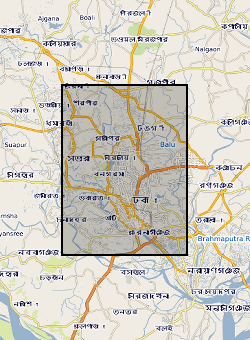
2 published papers from NERC grant NE/G016879/1. Palaeosol Control of Arsenic Pollution:The Bengal Basin in West Bengal, India by by U. Ghosal, P.K. Sikdar, and J.M. McArthur. Tracing recharge to aquifers beneath an Asian megacity with Cl/Br and stable isotopes: the example of Dhaka, Bangladesh by M. A. Hoque, J. M. McArthur, P. K. Sikdar, J. D. Ball and T. N. Molla (DOI 10.1007/s10040-014-1155-8)
-
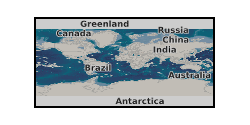
Programme of research funded by the Natural Environment Research Council. URGENT aims to stimulate the regeneration of the urban environment through understanding and managing the interaction of natural and man-made processes. Projects throughout the UK first set up in 1997 and completed in 2005. It was supported by partners from British industry, local authorities and Government agencies. A total of 40 URGENT projects in four key areas - air, water, soil and ecology. The projects aim was to determine the magnitude of urban environmental problems and risks, to understand the underlying patterns and processes that affect them, and to produce effective strategies for control and managment which will be accessible to users both in the UK and abroad.
-
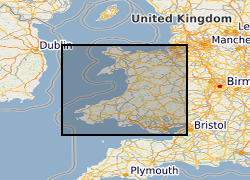
The Environment Agency and Natural Resources Wales have updated its groundwater vulnerability map to reflect improvements in data mapping, modelling capability and understanding of the factors affecting vulnerability. Two new maps are available which show the vulnerability of groundwater to a pollutant discharged at ground level. The potential impact of groundwater pollution is considered using the aquifer designation status which provides an indication of the scale and importance of groundwater for potable water supply and/or in supporting baseflow to rivers, lakes and wetlands. This dataset for Wales has shared intellectual property (IP) between Natural Resources Wales and British Geological Survey.
-
This dataset contains raw beaching data computed by marine debris simulations (run using OceanParcels) for a range of physical scenarios (surface currents from GLORYS12V1 (https://doi.org/10.3389/feart.2021.698876), Stokes drift from WAVERYS (https://doi.org/10.1007/s10236-020-01433-w), and surface winds from ERA5 (https://doi.org/10.1002/qj.3803)), as described in the accompanying manuscript. Through postprocessing, debris ‘connectivity’ matrices can be computed, providing predictions for the main terrestrial and marine source regions of plastic debris accumulating at remote islands in the western Indian Ocean. These simulations include beaching and sinking processes, and a set of example matrices is provided here (https://doi.org/10.5287/bodleian:DEdqwXZQw). However, these matrices can be recomputed for different sinking and beaching rates using the scripts archived here (https://doi.org/10.5281/zenodo.7351695), or see here (https://github.com/nvogtvincent/WIO_Marine_Debris/) for the live version with documentation. These predictions will be useful for environmental practitioners in the western Indian Ocean to assess source regions for marine debris accumulating at islands of interest, and when this debris is likely to beach. The data were produced as part of the Marine Dispersal and Retention in the Western Indian Ocean project funded by the Natural Environment Research Council (NERC) grant NE/S007474/1. See linked online references on this record for cited items given above.
-
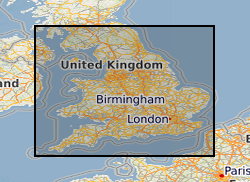
Oracle index to records of some 3500 waste sites in England and Wales identified by BGS as part of a survey carried out on behalf of the Departement of the Environment in 1973. The index has been corrected and updated to a limited extent, but the data itself has not been changed. The data was collected in 1972 and the information reflects the knowledge at that time. It does not reflect current interpretation. Not all authorities made returns and there are not records for all of the sites listed. However, the data is an invaluable source of information about pre-1974 sites. Information includes site name, location and risks to aquifers. It should be noted that the assessments were carried out when the data was collected and may not reflect current interpretation.
-
The Penlee Point Atmospheric Observatory (PPAO) was established by the Plymouth Marine Laboratory in May 2014 for long term observations of ocean-atmosphere interaction. The observatory is only a few tens of metres away from the water edge and 11m above mean sea level. This dataset contains air temperature, dew point, wind speed and direction, rainfall, sulphur dioxide, ozone, carbon dioxide and methane measurements from Penlee Point Atmospheric Observatory from 2014-2017. At the mouth of the Plymouth Sound, the site (50° 19.08' N, 4° 11.35' W) is exposed to marine air when the wind comes from 110° - 240°. Typical southwesterly winds tend to bring relatively clean background Atlantic air. In contrast, winds from the southeast are often contaminated by exhaust plumes from passing ships. The PPAO is in close proximity to marine sampling stations that form the Western Channel Observatory, enabling better understanding of the ocean-atmosphere coupling.
-
The Penlee Point Atmospheric Observatory (PPAO) was established by the Plymouth Marine Laboratory in May 2014 for long term observations of ocean-atmosphere interaction. The observatory is only a few tens of metres away from the water edge and 11m above mean sea level. This dataset collection contains air temperature, dew point, wind speed and direction, rainfall, sulphur dioxide, ozone, carbon dioxide and methane measurements from Penlee Point Atmospheric Observatory from 2014-2017. At the mouth of the Plymouth Sound, the site (50° 19.08' N, 4° 11.35' W) is exposed to marine air when the wind comes from 110° - 240°. Typical southwesterly winds tend to bring relatively clean background Atlantic air. In contrast, winds from the southeast are often contaminated by exhaust plumes from passing ships. The PPAO is in close proximity to marine sampling stations that form the Western Channel Observatory, enabling better understanding of the ocean-atmosphere coupling.
-
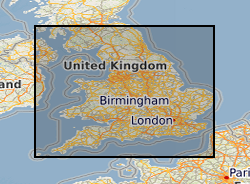
The Environment Agency has updated its groundwater vulnerability map to reflect improvements in data mapping, modelling capability and understanding of the factors affecting vulnerability. Two new maps are available which show the vulnerability of groundwater to a pollutant discharged at ground level. The potential impact of groundwater pollution is considered using the aquifer designation status which provides an indication of the scale and importance of groundwater for potable water supply and/or in supporting baseflow to rivers, lakes and wetlands. This dataset has shared IP (Intellectual Property) between Environment Agency and British Geological Survey. It supersedes the previous Groundwater Vulnerability 100k data released by EA.
-
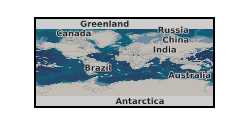
Concentrations of total organic carbon (TOC), total petroleum hydrocarbons, polycyclic aromatic hydrocarbons (PAHs) and polychlorinated biphenyls (PCBs) were determined in 84 near-surface soils (5-20 cm depth) taken from a 255 km2 area of Glasgow in the Clyde Basin, UK, during July 2011. Total petroleum hydrocarbon ranged from 79-2,505 mg kg-1 (mean 388 mg kg-1; median 272 mg kg-1) of which the aromatic fraction was 13-74 % (mean 44 %, median 43 %) and saturates were 28-87 % (mean 56 %, median 57 %). Σ16 PAH varied from 2-653 mg kg-1 (mean 32.4 mg kg-1; median 12.5mg kg-1) and Σ31 PAH range was 2.47-852 mg kg-1 (mean 45.4 mg kg-1; median 19.0 mg kg-1). PCB tri-hepta range was 2.2-1052 mg kg-1 (mean 32.4 mg kg-1; median 12.7 mg kg-1) and the ΣPCB7 was 0.3-344 mg kg-1 (mean 9.8 mg kg-1; median 2.7 mg kg-1). This data is associated with the published research paper https://doi.org/10.1017/S1755691018000324 Kim, A.W., Vane, C.H., Moss-Hayes, V. Berriro, D.B., Fordyce, F., Everrett, P. Nathanail, P.C. 2018. Polycyclic aromatic hydrocarbons (PAH) and polychlorinated biphenyls (PCB) in urban soils of Glasgow, UK. Earth and Environmental Science Transactions of the Royal Society of Edinburgh 108, 2-3, 231-248.
-
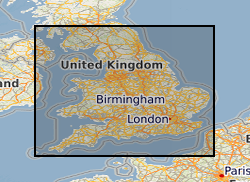
Records of some 3500 waste sites in England and Wales identified by BGS as part of a survey carried out on behalf of the Department of the Environment in 1973. Information is included on the extent of the site, geology, wastes and risks to aquifers It should be noted that the assessments were carried out when the data was collected and may not reflect current interpretation. There are not records for all of the sites listed.
 NERC Data Catalogue Service
NERC Data Catalogue Service